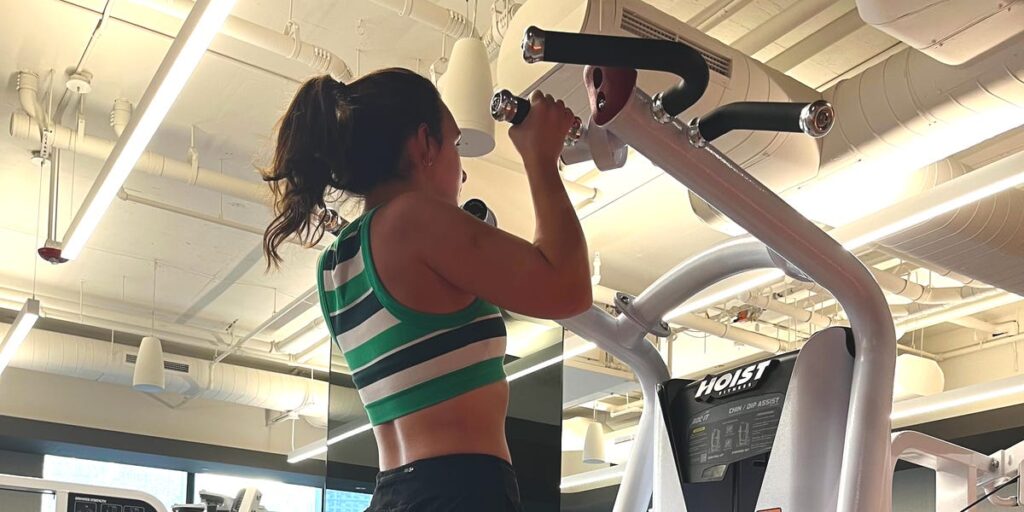- Body recomposition is the process of losing fat while gaining muscle at the same time.
- After a body composition analysis, I worked with a trainer to find exercises to reach my goals.
- I should focus on adding weight and doing shorter, more challenging cardio.
To ring in the new year, I booked a body composition analysis at the athletic club Life Time.
After I got a scan of my muscle mass and body fat, a personal trainer walked me through the results: for optimal health, I needed to lose body fat and gain more muscle.
My main takeaway is that changing my diet is key. I’ll get the best results if I maintain a calorie deficit, prioritize whole foods and lots of protein, and drink more water.
The trainer also said that I could update my current workout routine (a mix of cardio and strength training) to be more challenging. He walked me through a personal training session and showed me the exercises I needed to recompose my body.
Focus on strength training
Strength training is the best way to build muscle and burn fat. Because my body composition analysis showed that my legs are generally stronger than my arms, I asked if we could focus more on upper-body exercises.
To strengthen my upper body, I learned how to use machines for pull-ups, rows, and rope pulls.
I also worked on improving my chest press form. My trainer had me hold the barbell in position before I started doing reps so that I could make sure the correct muscles were activated. Otherwise, I won’t see much progress and could hurt myself.
His main takeaway was that I should keep track of how much I lift and make sure I’m increasing weight.
He recommended starting with a lighter weight (and higher rep count), slowly increasing my weight, and decreasing my reps as needed per exercise.
That way, I can ensure that I’m progressively overloading and building up muscles rather than plateauing. In addition to the classes I take, I plan to work on upper- and lower-body workouts on my own as well.
Improving my core strength
Pretty much every weightlifting exercise I do involves “activating my core” so that I can stay balanced and secure throughout. My trainer said I should also include core exercises to help support my strength training goals: whether I’m doing a deadlift or a chest press, a strong core is necessary to do them right. Otherwise, I won’t see many gains.
One I learned was lying on a box with my head and legs elevated while my back was flat. Holding positions like this for 30 seconds or a minute will gradually increase my core strength.
Try shorter cardio sessions
While I regularly run throughout the week, my trainer said that if I’m not challenging myself and keeping my heart rate up, I’m not actually burning much fat.
Rather than focusing on longer-distance runs where I go at a leisurely pace, he recommended doing shorter, 30-minute cardio sessions at the fastest pace I can tolerate.
Bulking and cutting at the same time is notoriously hard. There’s a reason athletes typically focus on either gaining muscle or losing fat at one time. While I’m more focused on cutting, I’m hoping an emphasis on strength training and quicker cardio can help me hit my goals.
Read the full article here


